Indonesia is a truly beautiful country with so much to offer to digital nomads. From the amazing beaches and coral reefs in Bali to the towering volcanoes and lush rainforests of Sumatra, there’s something for everyone. The people are friendly and welcoming, and the food is delicious! If you’re looking for an amazing place to work remotely from Indonesia should definitely be on your list.
Indonesia for digital nomads at a glance
The good
- Bali – Indo’s digital nomad mecca
- Beaches worthy of a travel brochure
- Some hotspots with a super-fast internet
The bad
- Pollution
- Bad infrastructure in remote areas
- Can be hard to get around (there are over 17,000 islands!)
An introduction to Indonesia
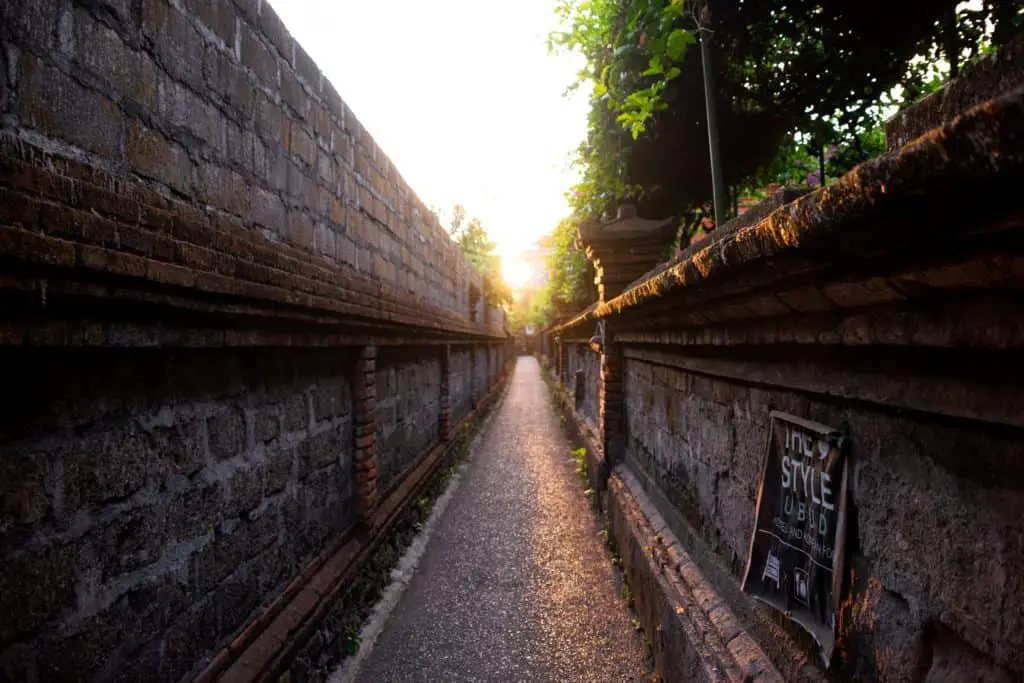
Spreading from the tips of the Malay Peninsula to the edge of Australia, Indonesia is an artist’s brush of islands that covers more than 5,000 kilometers from end to end.
Between its borders, the country offers mist-gathering jungles where orangutans swing in the teak trees, traffic-clogged cities throbbing with life and satay BBQs, and remote beaches shaded by stooping palms.
One place stands out from the crowd for digital nomads in Indonesia: Bali, the surf mecca, the nightlife hub, the haven of hipsters and good-vibes living.
But there are also plenty of other upcoming spots to consider, from the earthy folklore town of Yogyakarta to the paradise reaches of the white-sand Mentawai isles. Let’s take a look at the details…
Connectivity in Indonesia

Internet speeds in the major destinations of Indonesia are generally average to pretty good. This is not South Korea, with lightning-fast backbone connections in every household, but the digital infrastructure is decent, especially in larger towns and cities. We’d still recommend all arriving remote workers arm themselves with a SIM as a backup.
WiFi in Indonesia
It’s uncommon to find a place to stay in Bali or Lombok or the Gilis that doesn’t come with its WiFi. The same goes for big cities like Yogyakarta and Jakarta. The real issue is how fast that internet ends up being, and how reliable.
On the Isle of the Gods (Bali’s much-loved nickname), places like Canggu (more on that one later!) can score speeds of 21.9 Mbps and over. But there are also more isolated regencies where the internet speeds ebb to just 3 Mbps. That’s something of a metaphor for the rest of the nation: Strong WiFi in the towns, poor WiFi in the countryside.
Still, the real issue isn’t often the internet speed itself but the strength of the electrical grid. Even digital nomads in the built-up resorts of Seminyak and Kuta still complain of long power outages, particularly during the rainy season (Oct-April). That situation worsens in outlying areas, like the wilds of Papua and West Sumatra.
4G and mobile in Indonesia
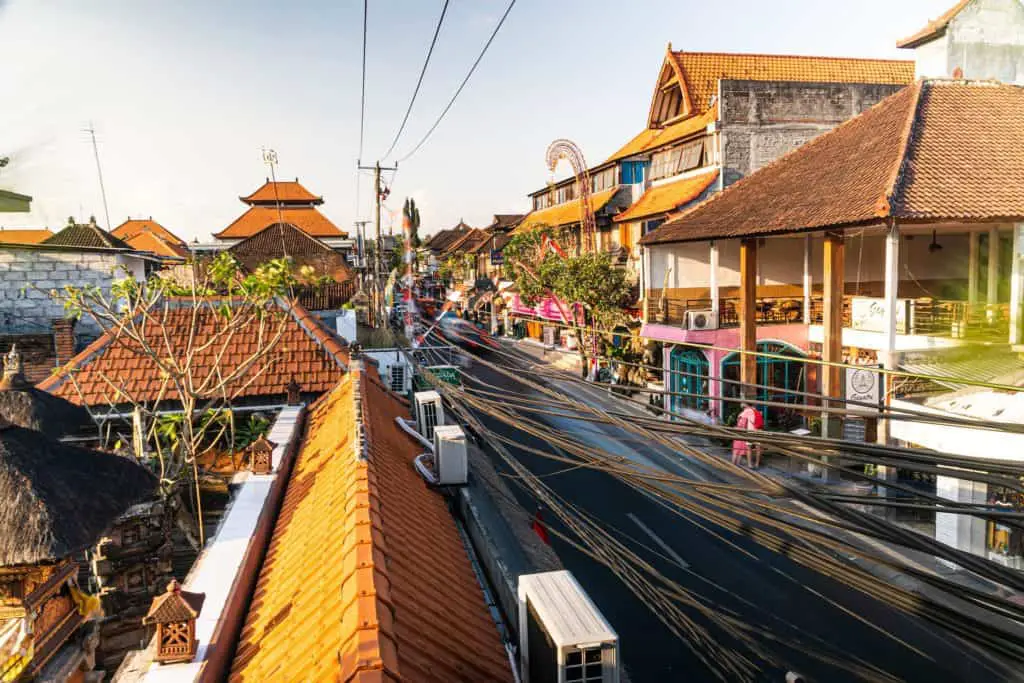
You might think that a country spread over 17,000 islands, across volcanos and several seas, would be hamstrung in the quest for decent 4G, but Indonesia has an impressive mobile network.
Many digital nomad favorites get complete coverage with only a few exceptions – like the cliff-backed beaches of Uluwatu or the west coast of Lombok, for example.
The colossal Telkomsel company dominates the market, but there are also smaller providers like Smartfren and Indosat starting to shake things up.
You can expect to pay in the region of 85,000 IDR ($5.50) for a SIM and about 10-15GB of data. Packages are best purchased at the airport as soon as you arrive.
A warning: Some public holidays and events can see the complete shutdown of Indonesia’s cellular network. An example is Nyepi Day in March when the whole island of Bali is supposed to go off-grid. It’s all in the name of honoring age-old traditions, but something digital nomads should be wary of if they plan to work remotely from Bali.
How to get a strong and reliable internet connection to work remotely from Indonesia?
In Indonesia, you will have to face the following issues related to your internet connection:
- WiFi poor speed and stability
- Power outages
- 4G coverage in remote areas
To get a strong WiFi network you will have to limit yourself to staying in areas where the internet infrastructure is reliable. In other words, if you need a speed over 20Mbps to get your work done you’ll need to stay away from remote places.
If you are more an adventurous digital nomad, and you wish to work from the beach in Sumatra, or from any other remote place, you will have to rely on the 4G coverage. Before booking any accommodation, I highly recommend checking the areas you wish to stay in on Nperf.com.
Let’s say you wish to stay in a very remote place, next to Banda Aceh (northern part of Sumatra), and to work from Lampuuk Beach. Go to Nperf.com and use the map to search for the exact location of the beach. You will be able to know in an instant the type of 4G coverage you will have access to.

In this particular case, we see that the whole place is covered with the normal 4G coverage (in orange). This means that you will get an average speed of 10Mbps. It also means that the stability of the network won’t be great. If the places had been covered with a 4G+ network, you could have expected a highly stable connection and a speed that would go up to 50Mbps.
Just apply this research method to all the places you wish to explore.
Indonesia Visa Covid-19 Update:
You will find all the latest information in regard to travel restrictions here.
Digital nomad Visa for Indonesia
There is no such thing as a digital nomad to work remotely from Indonesia. However, depending on the type of work you do there are several options you can look at:
Some digital nomads go for the Social Budaya Visa or the Working Visa.
The first applies to people visiting family or friends in the country and can allow for stays of up to six months at a time, although an interview with an immigration officer might be required for any extensions.
The latter is a fully-fledged right-to-work visa, giving you access to Indonesian employment rights. It’s famously hard to get, needing sponsorship from an established Indonesian business that intends to hire you.
The Third solution, and preferred solution for digital nomads, is the Business Visa (single or multiple entries). This Visa will allow you to stay up to one year in Indonesia.
What Visa do most digital nomads usually get?
People from nearly 170 countries around the globe don’t even have to apply for a visa to enter Indonesia. There’s a 30-day of access available with just a punch in the passport.
Of course, that’s not ideal if you were planning on staying longer, and it’s important to stress that Indo’s visa waiver is solely for tourism. Digital Nomads use it at their own risk.
In addition, it is important to note that Visa upon arrival can’t be turned into a social & cultural Visa.
To extend their time on the islands of Indo, a lot of digital nomads will opt for a 60-day visa. It costs $35 at the airport and can be extended for another $35 at an immigration office on the ground.
Again, it’s intended only for tourism purposes, so will still carry an element of uncertainty and risk for Digital Nomads.
Read more about the digital nomad visa options for Indonesia here.
Where to work as a digital nomad in Indonesia

Indonesia can be a real adventure for digital nomads who want to break away from the desk in their Airbnb.
Yes, there are those intriguing start-out co-working hubs in the major remote-work destinations.
But why not hit the cafes? This is the hallowed home of Javanese coffee, after all…
Cafés
One thing’s for sure – you’ll never be short of coffee in Indonesia.
The island of Java is known around the world for its rich, bitter beans, and some of the planet’s most celebrated brews originate in the volcanic soils there.
Of course, the coffee is just half the challenge for digital nomads, who also need a good internet link and a comfy place to sit for the day at the laptop.
That shouldn’t be hard to find. Indonesia has a well-developed culture of cafés, but they are typically limited to places that tourists visit.
That means hipster joints in Bali or Lombok, along with spots to sit and work in Jakarta and Yogyakarta (which has some of the best establishments in the country).
In spots like the Mentawai Islands and the Gilis, it’s much more likely to be an open-air warung (traditional Indonesian tavern) by the beach.
Co-working spaces

Co-working spaces are a relatively new phenomenon in much of Indonesia.
They are popping up in Jakarta, Surabaya, and Bandung, but don’t expect the cutting-edge and cool environments of the hubs in Chiang Mai. For those, you’ll need to go to Bali…
Bali is a mecca for co-working places of all shapes and sizes. From code camps to surf schools with DN desks and co-living areas, there’s myriad get through on the Isle of the Gods.
Of course, that’s backed up by some of the quickest internet speeds in the county. (Fibre connections that regularly go over 21 Mbps are the norm).
Tech stuff for digital nomads in Indonesia

Here, we’ll dig down into the nitty-gritty of Indonesia’s tech side. There’s info on the plug types, voltages, and other computer-related aspects of the country…
Plugs and things in Indonesia
Indonesia uses Type C and Type F sockets. That’s good news for digital nomads originating in Europe because it means there’s a chance your normal two-pronged contacts will work.
If not, an adapter that can convert plugs into Type E is a good way to go – they should work with both wall inserts in Indo. The standard voltage on connections is 230 at 50 Hz.
Security and accessibility
Reports show that the Indonesian government currently routinely blocks a whopping 800,000 websites. Official sources say that the vast majority of those are aimed at reducing radical religious content and unsavory material.
However, new ways of censoring online content came into being in 2018 and there’s been a noticeable uptick in the number of URLs that can no longer be accessed since then. That said, all major international news outlets and social media providers are still given the okay.
Repairs and computer shops
Don’t despair if your keyboard breaks or the laptop screen starts a-ghosting in Indonesia – there’s a good level of tech support at hand, at least in the major towns, cities, and resorts.
A worst-case scenario is that you’ll have to high-tail it to the nearest tourist destination because there’s not going to be an Android outlet halfway up Mount Bromo.
There are plenty of electronics malls and trading courts where mobile repairs and computer maintenance can be had for cheap in Jakarta. Bali also has plenty, especially around Denpasar and Kuta on the south coast.
Cost of living in Indonesia
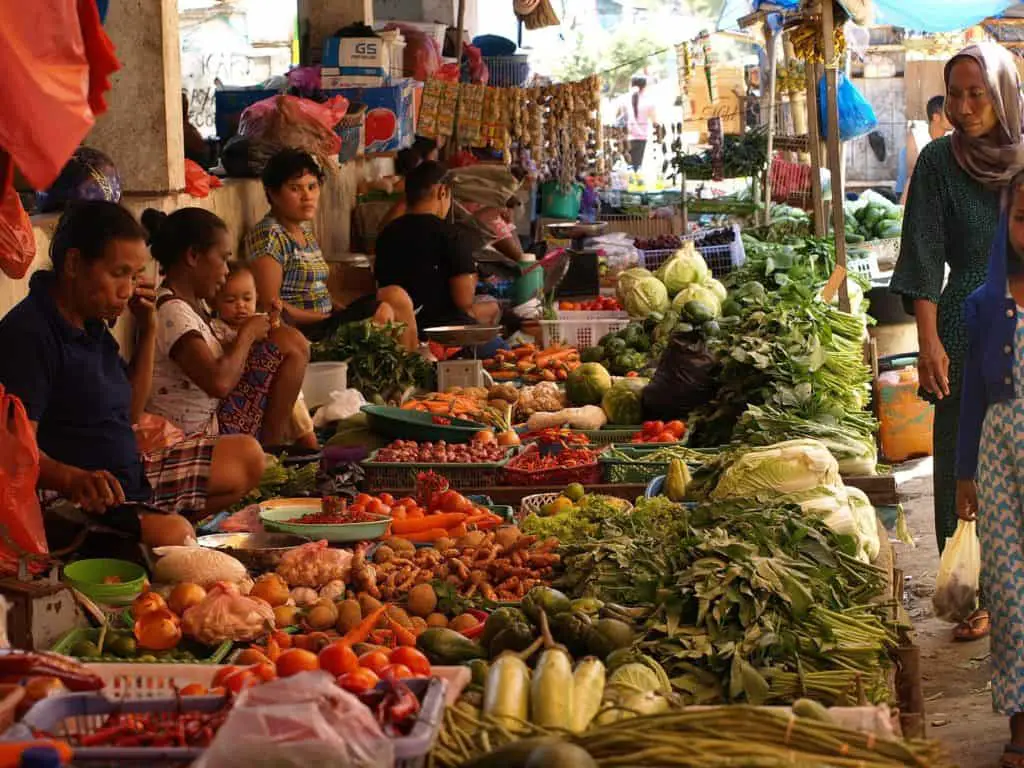
There are digital nomad destinations in Indonesia where the average monthly cost of living dips well below $1,000.
However, they’re probably not the places you’ve heard of. The headline acts of Bali all come with estimated outgoings that sit between $961 (in Uluwatu) and $2,000 (in the chic resort hub of Seminyak).
For that tropical island life but with lower costs, you could make the hop over to Lombok, where Senggigi’s beach towns offer living for around the $540/month mark on average.
Other islands are somewhere in between, like Sumatra ($600-800 per month) and Java (from $767 in Surabaya to over $1,600 in the capital). So, a lot depends on where you choose to go.
Travel basics for Indonesia
Language
Get ready, because Indo has a mind-boggling 300 official languages (going up to over 700 when you include the dialects). The most commonly spoken is Bahasa Indonesia (known, simply, as Indonesian), which is understood by virtually everyone. English is also pretty common, particularly if you’re bound for the surf towns of Bali or the beaches of Lombok.
When to visit Indonesia
There’s no hard and fast rule about when’s the best time to visit Indonesia. This vast nation straddles the Equator line, which has a stabilizing effect on the weather, keeping it relatively uniform throughout the year. Roughly speaking, the rains come between October and March, but end for the European summertime, meaning it’s the opposite of much of the rest of Southeast Asia. There are a few seasons and regional changes to watch out for:
- Bali is busiest from May-October, which is the main surf season for the legendary beaches along the west coast.
- Sulawesi gets heavy rain in November, December, and January on its southern side, but monsoons spread throughout the whole year in the north.
- Java (home to Jakarta) tends to be drier than most regions. When the rainy season does come, it’s typically limited to short, sharp bursts in the afternoon and evening.
Food

Indonesian food is a fusion of Southeast Asian spice, Indian flair, and European flavors leftover from the age of colonial rule. Underpinning the lot is a strong connection to the ocean, which is hardly a surprise considering you’re rarely more than a stone’s throw from the coast in this water-washed country. Some of the dishes you simply have to try are:
- Satay: You’ll smell satay skewers sizzling on the roadside BBQ grills all over Indonesia. They’re pieces of meat that are doused in peanut sauce and griddled atop open coals.
- Gado-Gado: Literally meaning “mix-mix” this ramshackle dish is a medley of steamed and blanched veg, covered in a top of tempeh protein, hard-boiled eggs, and aromatic peanut sauce. Best eaten on the islands of Lombok and Bali.
- Nasi goreng: Indonesia’s version of the humble fried rice is packed with tangy kecap manis soy sauce, chili powder, and – for the non-veggies – seafood.
Where digital nomads love in Indonesia
Canggu

It’s been a few years now since Canggu stole the crown of the digital nomad capital from Chiang Mai in Thailand. But it’s still going strong.
Vegan cafés, organic eateries, German bakeries, cool roasteries, chic beach bars, and yoga studios – the whole lot exists on this short stretch of shoreline just west of Seminyak.
If you’re unsure where to go first in Indonesia as a digital nomad, this is a great place to start. There’s fast internet, loads of rental opportunities, and a ready-made culture of expats.
Ubud

Further inland from the famous southern surf beaches of Bali is the artsy jungle town of Ubud. A haven in the hills, it’s been a place for painters and poets to find inspiration over the years.
The piece de resistance is the so-called Monkey Forest, where crab-eating macaques clamber over ancient Hindu shrines.
There’s also a bustling marketplace selling batik fabrics and Luwak coffee (read the label before you buy!).
Accommodation-wise, it’s cheaper than the coast and most pads are downright luxurious to boot!
Lombok
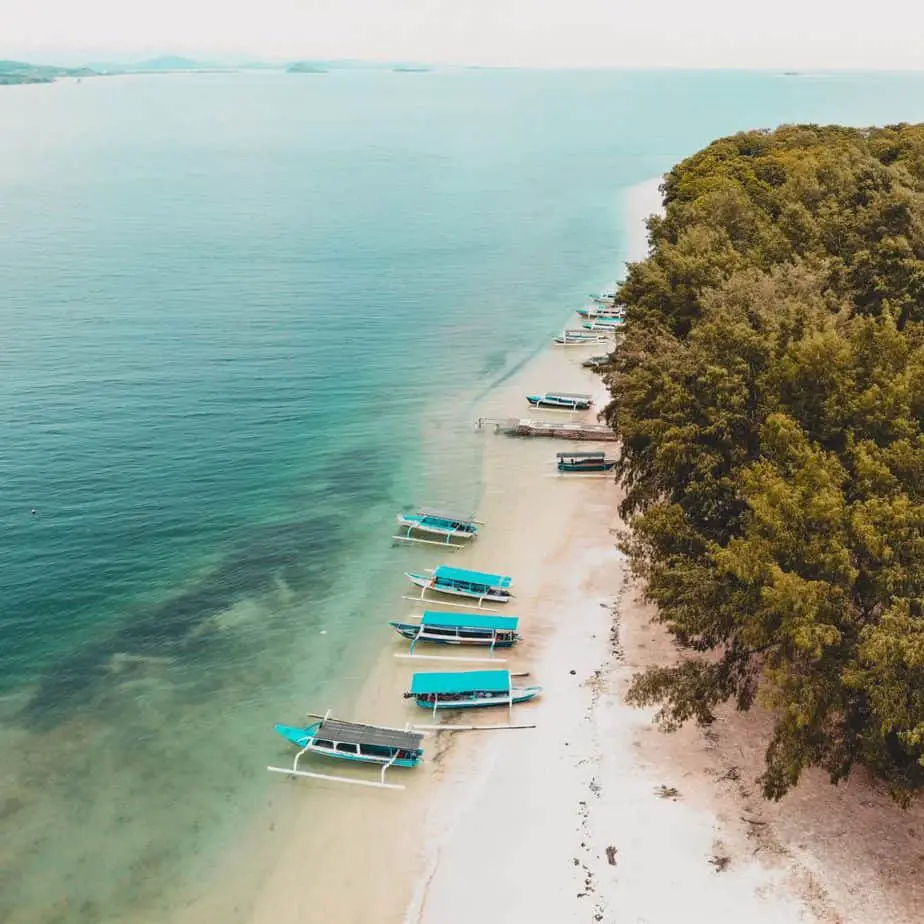
Lombok is the little bro of Bali. It’s just as beautiful but nowhere near as popular.
We’re not sure how long that will last, however, because the DNs and the surfers have been coming for a couple of years now. Senggigi is the place that’s probably best known, with its white-sand bays hidden below stooping palms.
Kuta Lombok is on the southern shoreline, with some awesome reef breaks for expert board riders. And then come the Gilis, where evening parties with backpackers meld into long days of snorkeling and sunbathing.
Yogyakarta

Yogyakarta is the location for digital nomads who love to delve into the local culture. The hipster cafés of Bali are replaced here by soaring temples that have their roots in the ancient Buddhist culture of Java.
On top of that, there are great palaces and an old town laced with coffee houses selling homegrown beans. The city might not have the ready-made DN community, but it’s great if you want to sample age-old gamelan music and buy handcrafted batiks.
Jakarta
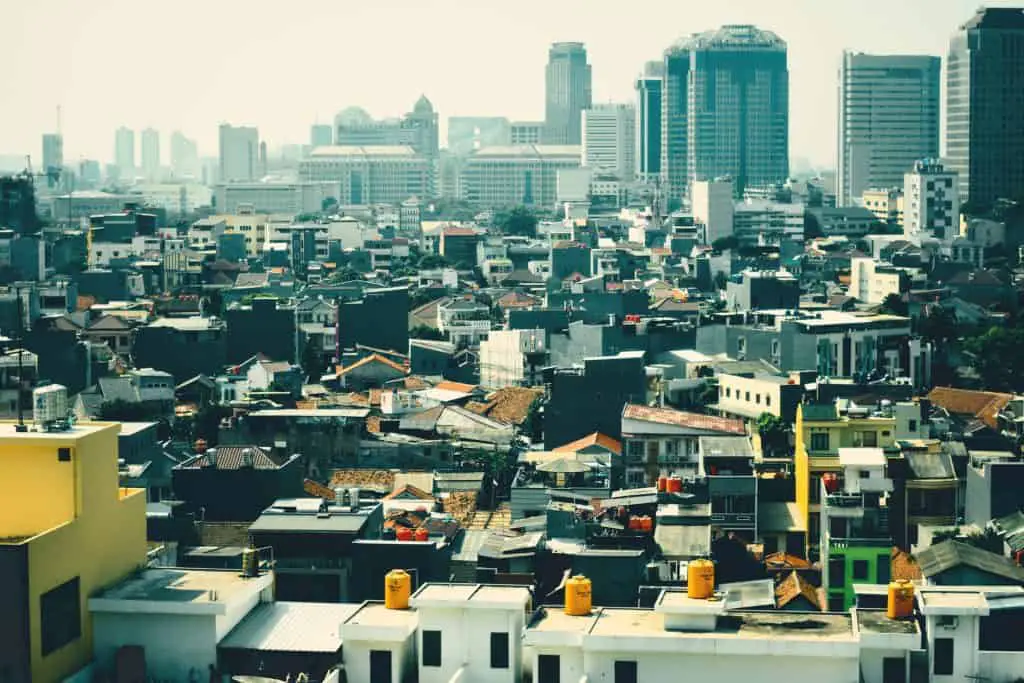
Jakarta doesn’t have the same buzz about it as Bangkok or Hanoi, but it’s still one of Southeast Asia’s bustling capitals. Nearly 10 million people call it home, so it’s a pulsating choice for DNs in search of a true metropolis.
Areas you might want to home in on include Chinatown, for the steamy food stalls and strange bazaars, and Kota, where little touches of Dutch colonial design still hide beneath the skyscrapers.
Airbnbs for Digital Nomads in Indonesia
There are thousands of rental listings on Airbnb that should be viable options for digital nomads in Indonesia.
Only, the vast majority of them are concentrated in the places where most people go. To put it another way, there’s no use scanning the service for that perfect condo on the wild isles of Komodo or amid the jungles of Papua.
Much better are the towns around the Bukit Peninsular and the beaches of southern Bali and eastern Lombok.
There, you’ll find villas with pools, verandas, and high-speed WiFi aplenty, often with tempting monthly discounts to take them below $1,000/month.
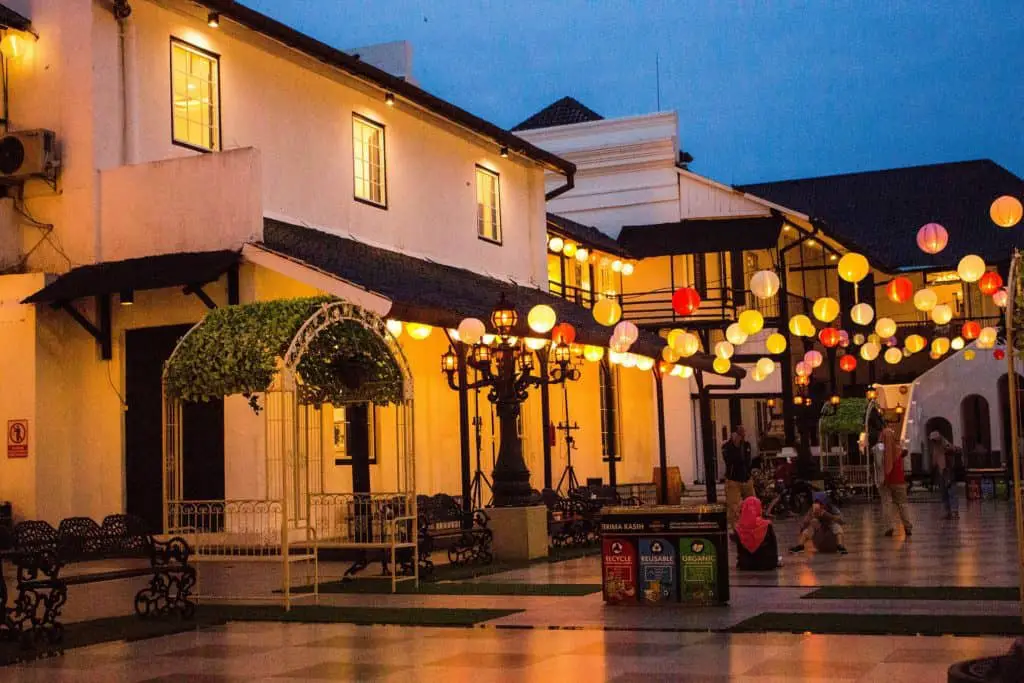
Digital nomad hotels and Co-living spaces
The upcoming trend of co-living spaces (co-working spaces with attached rooms and apartments that are specifically aimed at digital nomads) is slowly making its way across Indonesia. Bali and Jakarta are currently where you’ll find the most options.
They usually have good deals for office-bed combinations, with reduced prices for couples. What’s more, some bring great extras to the table, offering morning yoga programs, surf courses, and even free evening cook-ups with fellow remote workers!
